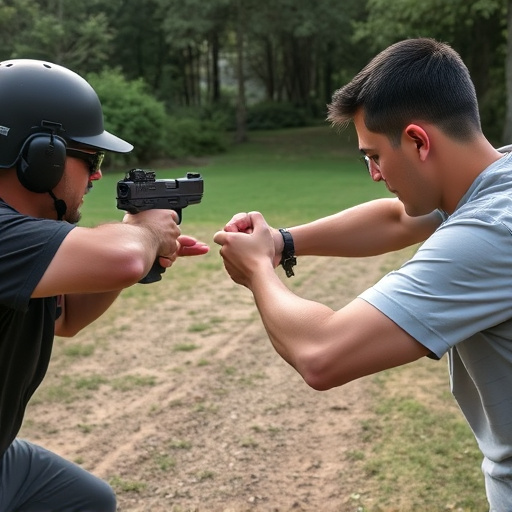Stun weapons, ranging from guns to tasers, offer non-lethal self-defense strategies. Projectiles are ideal for de-escalation at a distance, while contact weapons like tasers immobilize in close range but require meticulous monthly maintenance—cleaning, inspections, lubrication, and secure storage—to ensure reliability and reduce injury risk, extending their lifespan for when you need them most.
In the realm of personal defense, stun weapons offer a non-lethal option. This article delves into the contrasting worlds of projectile and contact stun weapons, shedding light on their unique capabilities. Understanding the key differences between these designs is vital for informed choices. Additionally, we provide essential stun gun monthly maintenance tips to ensure optimal performance, crucial for those relying on these devices for safety.
- Understanding Projectile and Contact Stun Weapons: Key Differences
- Stun Gun Monthly Maintenance Tips for Optimal Performance
Understanding Projectile and Contact Stun Weapons: Key Differences

Projectile and contact stun weapons represent two distinct approaches in non-lethal self-defense. Projectiles, such as stun guns or pepper spray, operate by delivering a force through distance, aiming to incapacitate a target with a blast of energy or irritant. This method offers a level of safety for the user as they don’t require direct contact, making it ideal for situations where de-escalation is crucial and striking the assailant isn’t necessary.
Contact stun weapons, on the other hand, involve direct physical interaction. Electroshock guns or tasers use electrical current to disrupt muscle control, rendering the target temporarily immobile. This category demands regular maintenance, including monthly cleaning and battery checks, like stun gun monthly maintenance tips recommend, to ensure optimal functionality. The close range of contact allows for greater certainty in incapacitating an attacker but also increases the risk of injury to the user if not used correctly.
Stun Gun Monthly Maintenance Tips for Optimal Performance

Regular monthly maintenance is key to ensuring your stun gun remains reliable and performs optimally. Start by thoroughly cleaning the device with a soft, dry cloth to remove any dust or debris. This simple step prevents buildup that could interfere with its functionality. Next, inspect the stun gun for any signs of damage or wear; replace any worn-out parts immediately, as this can affect performance and safety.
Lubricate the trigger mechanism and switch contacts sparingly with a precision lubricant to prevent oversaturation, which could attract moisture and cause corrosion. Lastly, store your stun gun in a secure, dry place, keeping it away from extreme temperatures and direct sunlight. Remember, consistent care will extend the lifespan of your stun gun and guarantee its ready availability when needed.
In conclusion, both projectile and contact stun weapons offer unique solutions for self-defence, each with its own advantages. While projectiles provide a safe, non-lethal way to disable an assailant from a distance, contact stun devices offer immediate, direct protection by temporarily incapacitating the target. Regular stun gun monthly maintenance is crucial for ensuring optimal performance and reliability in critical situations, making it an essential consideration for personal safety enthusiasts. By understanding these differences and implementing proper upkeep routines, individuals can make informed choices to protect themselves effectively.
